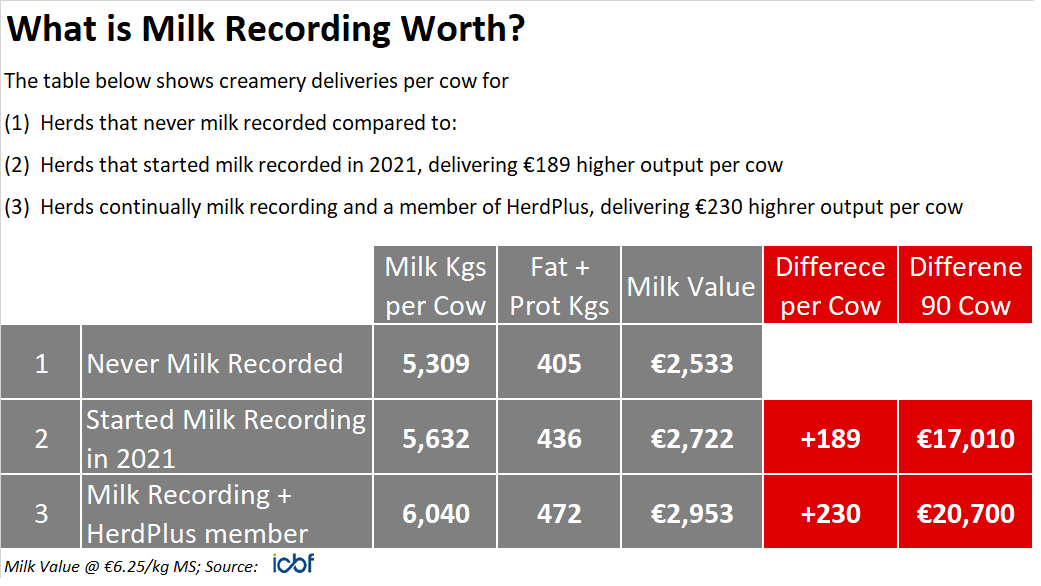2022 saw an increase in the demand for milk recording, but there is still a large cohort of farmers that have yet to start.
The increase in demand was predominately driven by the new antibiotic changes and the new need for data when using dry cows tubes.
Many farms have used selective dry cow therapy (SDCT) for the first time this year, with the data from milk recording being used to select cows.
With SDCT use to increase on Irish farms going forward it is likely that the information available from recording cows will become even more important.
Milk recording
Other than the use of SDCT, milk recording offers many other benefits to farmers, which can result in better-quality milk being produced on the farm.
There are a number of main objectives when using milk recording, which ultimately help to improve overall herd performance.
The main objectives:
- Assessing dry cow therapy performance;
- Assessing current performance;
- Using reports to plan a ‘containment strategy’ for SCC;
- Identifying cows for culling based on SCC (repeat offenders) and lifetime performance data;
- Identifying cows not to breed replacements from (Lifetime performance report).
To many farmers, milk recording can seem like just another job that has been added to an already hefty workload.
But for the vast majority the benefits outweigh the negatives and milk recording typically becomes a vital part of the farm operation.
Breeding
Farmers are hearing how sexed semen will play a vital role on farms going forward and that it should be used on the best cows to obtain heifers from these cows.
But without milk recording data is it impossible to know which cows are your best cows.
Yes, the cow economic breeding index (EBI) will give you a good indication, but you may be surprised by the production of some cows when you look at the data available.
It is also worth noting that according to Irish Cattle Breeding Federation (ICBF) data, farmers that have been recording their cows for a number of years have an increased profitability.
Based on a value of €6.25/kg of milk solids, according to ICBF, there is an increased profit/cow of €230 – this equates to €20,700 on a 90-cow farm.

This increase in profits is most likely due the information being offered to farmers which can then be used to make breeding decisions.
